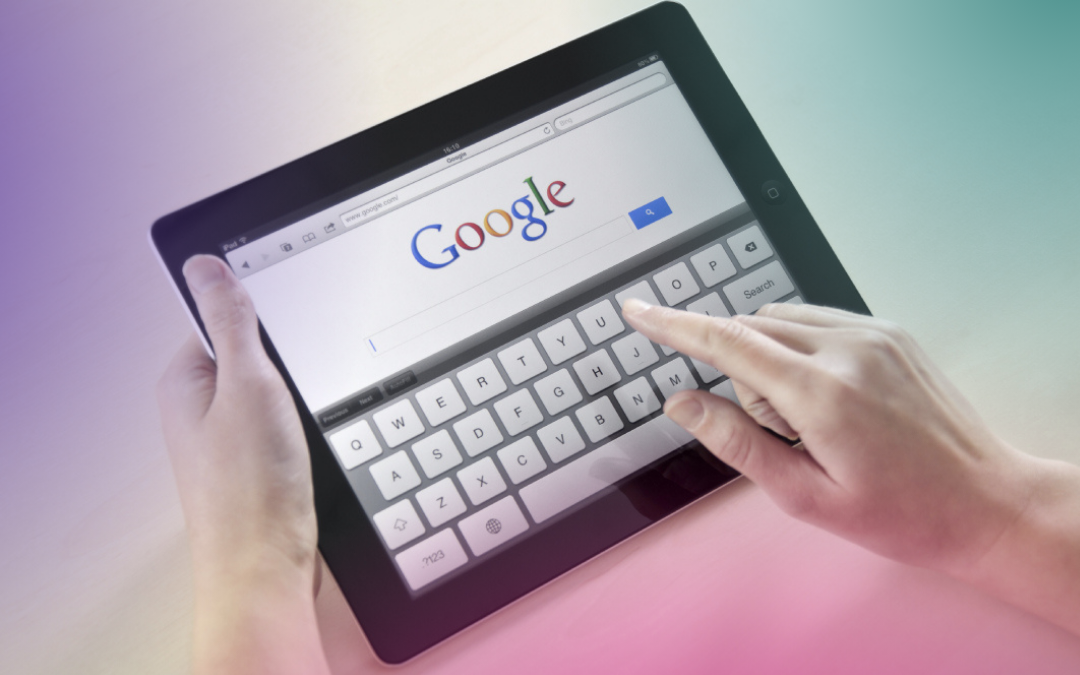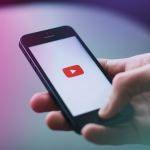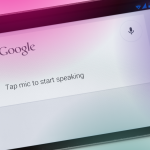Last Updated on 16th February 2024
PPC has become a major player in online advertising. It gives online businesses more visibility, drives traffic and increases conversions.
But is it more sustainable than organic search?
It’s no secret that search engines like Google et al make huge profits from paid ads. To give you some idea, Google is hitting around $10bn a quarter on AdWord spend.
Search engines will always try and drive companies down the path of paid advertising, but this method of online marketing is not sustainable for every company.
For small businesses in competitive fields for example, it becomes expensive, with some clicks costing in excess of £100 each. You don’t necessarily get more visitors if you pay more, and when you stop your paid ads campaign, the amount of traffic you receive suffers.
The advantages of paid advertising
For start-ups and other online businesses that have low visibility online, paid ads does offer a solution to increase your earnings.
By bidding on targeted keywords and purchasing advertising space, you will be guaranteed visibility on the first page. Furthermore, you are only charged when somebody clicks on your ad.
You can therefore be assured of lead generation. Your advertising budget is not being totally wasted. What does matter however, is that your landing page and sales pages do a good job of converting browsers into buyers. Reach without action and conversion is expensive and if the user experience on visiting your site for the first time is not as good as your ad led them to believe, you’ll have a hard job of luring them back again.
So what about organic search?
The growth of paid advertising has led to doomsayers in the digital marketing community to announce SEO is dead.
But SEO is far from a thing of the past and is arguably going from strength to strength. As search engines improve their algorithms, websites producing top quality content and high value UX will be rewarded with better page rankings over time.
The downside to SEO is that achieving results is a slow process. It takes time for webmasters to build up trust and authority with search engines. Firms also have to be consistently producing useful, high-quality content that offers value to readers, and marketing team members specialising in digital public relations (Digital PR) need time to begin to develop relationships with the ‘Linkerati’ (those with the power or ‘where-with-all’ to share and link to the optimised content). SEO takes time and it’s also not sensible to say that it is ‘free traffic’. Some of the best campaigns for SEO likely have been undertaken with considerable investment in both ideation, creative assets and human resources.
Organic search results may take time, but they do offer long-term benefits. Once you hit the upper echelons of search results, click through rates improve dramatically and profits could potentially soar.
But SEO is a game of patience and consistency. In the meantime you have to find alternative ways of promoting your products and services online. PPC is a good place to start. For many firms, it’s the only place to start.
Social media networks will also give you exposure to followers, but followers are not necessarily buyers. Search engines on the other hand drive customers to your website that have an intention to buy.
For firms with low visibility, the solution to modern online marketing is to venture into PPC and gradually build up SEO results by creating and becoming know to search engines as a site with relevant authority on a vertical / niche. Once you start attracting traffic through organic sources, you can lower your marketing budget over time (if you wish to (you may be receiving a positive ROI already via PPC)), whilst increasing conversions.
Consider PPC being akin to ‘renting the search results positions’, whilst SEO is an investment akin to ‘a mortgage in the search results positions’. One is immediate and can be turned on almost instantaneously (rented), but the minute you stop paying for PPC you’ll find you don’t have any place to stay in paid search. With SEO it’s very much like long-term mortgage payments which are an investment in your website and the website‘s reputation as it grows in the eyes of both search engines and users.
Is Google Replacing Organic Results With Paid Ads?
When Google announced they were removing the right menu bar of paid ads, it raised a few eyebrows amongst marketers. The official reason was so the search engine could add an extra paid ad at the top of the screen.
Given most clickthroughs come from the first three paid ads above the fold, there is justification for the change. But removing the entire right-side menu means fewer paid ads appear on page one of Google.
There is clearly more to this story.
Removing the clutter of paid ads from the right-hand side of search results does create a better-user experience. The results page is now much cleaner and less busy to look at – especially on mobile handsets.
But by removing the number of Adwords from the first page of Google means there is less primary ad space for businesses paying for a PPC campaign to occupy.
Could reduced visibility have a negative impact on PPC campaigns or Google’s ad revenue?
It is unlikely the search engine giant is likely to allow either of those scenarios to happen. That can only mean the Big G has a contingency plan.
How will Paid Ads impact searches?
Research shows that the top three paid ads above the fold receive the most clicks – 41.4%. Google has now added a fourth paid ad box to fill this space which typically takes all the space above the fold.
It will be interesting to see how results pan out in the coming months, but there is a real threat that pushing organic results down the page will result in less traffic for websites that have worked hard to rank highly for competitive keywords.
Whatever the reason for Google’s decision to push organic ads off-screen, there is a concern throughout the industry that organic results are being challenged to compete with paid ads.
Furthermore, this idea goes against Google’s determination to enforce companies to publish high-quality content.
Companies can rank well for AdWords and dominate space they have paid for, but may not be producing better content than a company that has worked tirelessly and earned the right to rank on page one.
So will Google compromise quality content for paid ads? Does the search engine giant really care about delivering the best results to end users or are they only interested in fleecing online businesses to pay for advertising space?
It will be interesting to see how this story develops. Will Google add any more paid ads above the fold and is the company on a mission to make AdWords dominate the first page?
How Paid Search Is Becoming A Branding Strategy
When Google first launched Adwords it was used solely as a tactic to accompany SEO. But as paid search has evolved, online companies are recognising the value of using PPC as a branding strategy.
The fact of the matter is paid search is a powerful marketing tool. It gives you visibility in search engine listings, drives traffic and helps to increase conversions. Brands can begin to receive the benefit of ‘the Halo effect’ in marketing terms.
Paid search is not for everyone of course, but as online shopping goes mobile-centric, the need for visibility in search engines becomes more critical.
Furthermore, the added follow-on reach of ‘re-marketing and retargeting’ via the Google Display Network to past visitors based on their behaviour on your website continues to keep your brand front of mind in readiness for the moment the user or prospect customer is likely to want to take the next step and actually buy your product, book that holiday or take a test drive.
Users do not usually convert on their first visit to your site and therefore it makes sense to ensure you go where they go after they’ve received their initial introduction to your services or products on site. This is primarily achievable through paid search supporting organic search (SEO). It’s all part of a more joined up cross-channel strategy. Without it you have a very clear gap.
Building your brand
To build your brand online, you need to connect with consumers. But the only way you can do that is by being seen. There is social media of course, but attracting new customers that want to engage with your brand is a slow process.
Search on the other hand attracts customers with intent. They are actively looking for your products and services. Not only does Google et al work for brands, it works for consumers as well.
But you have to find a way to connect with consumers actively looking for your products and services and that are ready to purchase. And paid advertising is the only strategy that makes that possible unless you have had a dedicated SEO strategy for years and have not been punished with Google penalties.
Audience-based solutions
So your brand is now on the first page of search engines. But so are a score of other competing firms. Half the battle is won, but you still have to attract users to click on your ads.
And that means getting into the mind of your audience. Consumers want solutions. This is where brands come into their own. What solutions can your company provide that your competitors don’t?
If you do not have one already, create a unique selling point. What gaps are there in the marketing that nobody is filling? Research statistics, developments and trends in your industry to identify problems you can solve.
AdWord tools
Google has developed its paid search platform into a powerful marketing tool by adding new services that allow brands to improve their campaign strategies.
Launching ads is quicker and easier to do since the launch of the shopping campaigns feature which allows marketers to feature attributes such as images alongside the price and promotional message.
You can also attach ad extensions to make your promotion stand out with additional information. Including location, phone numbers or auto-reservations are highly effective for local searches.
Adwords is not only transforming the way in which brands can attract new customers, it is providing marketers with rich signals that hone in on user intent across multiple channels.
Not only that, but with the data analytics in your Adwords account, companies can learn more about market trends, user behaviour and the competition which is vital for devising effective marketing strategies.
Paid Search, Paid Social or Both?
Google, Facebook and other ad publishers provide powerful platforms for marketers. Paid search is achieving incredible results for online businesses, but which PPC campaign will most benefit your business?
The introduction between paid social and paid search has developed push and pull marketing options. Whilst search pulls in prospects actively searching for merchandise, social media can be used to push product awareness.
There is of course a strong claim for companies to utilise both strategies, but for many small businesses, a split budget is not an option. So if you had to choose between paid search and social advertising, what is the best choice?
Search marketing
PPC is a powerful marketing tool in that ads are displayed against an end-users search. This gives the ads relevance. And given the user-intent is focused on the advertised product, the chances of prospects clicking on your ad are increased.
Or are they?
When an end-user keys a search term into the engine, they are also given a list of organic results. And users will typically opt for an organic result over a paid ad.
However, attitudes are changing as organic search results do not always take the user to the page they actually want, but are directed to the Homepage instead.
PPC campaigns give marketers the option to link to landing pages which take searchers directly to the product or service page they are looking for to get further information.
Paid search also guarantees your ad will be displayed on page one of Google, and although there is still a lot of competition, enticing ad copy will increase your chances of a click-through.
Social advertising
Now that social media networks have pulled the plug on free advertising and limit the number of users that have access to your content, paid advertising is the only way for you to place you content in front of followers.
Social ads appear in news feeds of followers and flagged as paid ads. As with Google Adwords, advertisers are only charged when users click on the ads.
Although social ads will be seen by more people than search advertising, the user-intent is not there. Thus there are no guarantees anybody will be interested in your ad.
However, impulse purchasing is a common behaviour and with powerful ad copy, there is the possibility of attracting as much traffic as you would through search engines – if not more.
Having a budget big enough to tackle both search and social advertising is the best option – and arguably an ideal world.
But if you do have to make a choice between search and social, the most sensible thing to do is try them both and see which offers the best ROI. This will take time however as you have to test ads to find the right balance.
Whilst both paid search and social media advertising offers great benefits to companies, the difference in pull and push marketing could make a critical difference for your business.
Integrating Paid Search and Social Media Into Your SEO Campaign
Unless you are already ranking in the top half of page one Google, or at the very least the top 20, or operate to an extensive long tailed strategy, SEO alone will not earn you the visibility you need to make a significant impression online.
The same can be said for a lone social media strategy. Facebook limits the number of “friends” that receive your posts to just six per cent and Twitter tweets fall off the radar in less than a minute.
Linkedin and Google Plus mostly tailor for B2B contacts and the rest are just looking for work. That doesn’t mean unemployed readers will not engage with your content, but they hardly represent a boost to your profits.
Paid advertising
Online marketing used to be a cost-effective means of promoting your company, its services and products. But now social media networks have snared almost half the global population – many of which are businesses – the whoremongers have a levitated position to force companies to pay for their advertising.
And if companies want to make a profit by using online resources, they do not have many options others than forking out for paid advertising. The good news is that statistics show that integrating social ads and search ads generate a higher click-through rate and most importantly improve conversions. There is also the benefit of the ‘halo effect’ which can be derived from building a brand recognition and a type of synergy (the sum of the parts is greater than the whole).
For example, when a user clicks an ad in Linkedin – a social ad – they are redirected to a landing page. Cookies on the landing page flag the user as an interested enquirer thus they become a target for search ads.
You can also identify prospects by allowing them the opportunity to login to your website and create an account using their social network login details. This tactic also gives you access to consumer data.
Integrating teams
When you integrate two strategies, you should also integrate teams. A social media team should be aware of what the paid ad team are promoting that month so they can look for social signals and act on them.
If you also have a content marketing team that publish articles, the focus should be on the promoted products or services in the paid ads. The social media team should have a schedule of when articles are published so they can track social engagement.
With limited opportunities to make an impression through organic search, online businesses have little option other than to opt for paid advertising. However, to make the most of your investment, you can still use existing platforms to spread your promotion wider across a targeted audience.
Could Paid Ads Ruin Social Media Marketing Channels?
As far as we know, social media was never designed to become a marketing platform. But inevitably it has. Perhaps that was the plan to make social networks money in the first place. But maybe not.
Either way, we are faced with the reality that social media networks are an easy way for companies to connect with customers and push their products and services on to them.
It’s only a matter of time before social networkers get fed up with receiving irrelevant content and promotional videos. They only joined to hang out with their friends and share news and interests!
Paid advertising is a pain
Social networks have not done anything to smooth over a growing problem. If anything, they are making it worse. For marketers to get their content seen by more than a handful of prospects, paid advertising is the only way to go.
As a result, unwanted content is appearing newsfeeds of social media users. You have probably seen plenty already. It’s a nuisance isn’t it? And if you think it’s a pain, then so will your audience.
So now, companies are faced with a Catch-22. You either have to shell out for paid advertising or have a limited presence on social media. For the time being, paid advertising on social media may be working for some companies, but how long will it last?
It won’t be long until social networkers are flooded with content companies have paid to sync with their newsfeeds. It is often the case that the recipients have no interest whatsoever in the advert and they inevitably get in the way.
Essentially, paid social media ads are the new pop-up banners. Surveys show that intrusive ads like this are more likely to give your brand a poor reputation with consumers and ruin your chances of acquiring their services through any channel, online or offline.
Creating content for social media
Marketers got wise to content creation targeting social users. Content should not be advertising, it should be informative, or entertaining. Otherwise you do not get any engagement.
The same can be said for paid advertising. So now companies are having to pay extra to produce the content they were posting before. And it’s not really advertising. Social networks have you by the curlies.
Back to the Catch-22. Do you take advantage of social selling while the grape is ripe, or do you hold off and protect your online reputation and brand name without upsetting anybody?
Whilst social networks will not collapse altogether, it would seem that effective social media marketing is a short-term game. How do you want to come out of it in the long-term?
The human element of engaging with customers on social media has a key role to play, now and in the future, so you need to take the decision what advertising you are prepared to pay for via this channel – lead generation or a sales pitch?
Content solutions
The other option is to quit producing content in the popular networks and use Twitter, Facebook et al for smooching prospects, building an online reputation as an expert and learning about the needs of your audience.
Emerging social media networks are better designed for producing content and have a ready-made audience of readers that are genuinely interested in the topics you are posting.
By all means, reserve content for emerging social sites such as Quora, Medium and Bubblews to drive traffic, but do not expect these sites to generate conversions. Search is still better than social.












